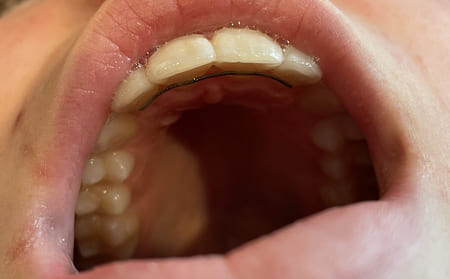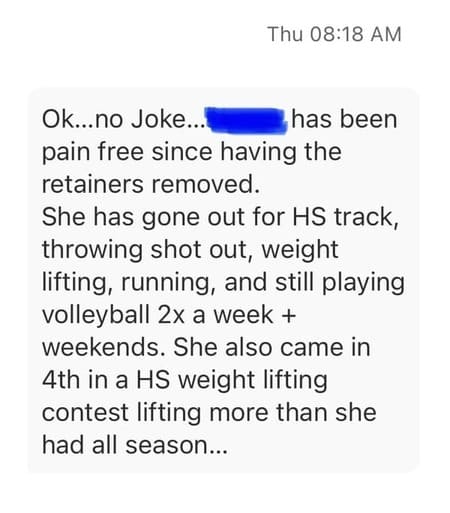It’s always so hard when you have an athlete come in who has been in pain for so long with no answers. In this case around 7 months. 14 year old girl. Competitive volleyball player, track athlete and powerlifter.
She didn’t deserve to be sitting out of competition, practices, etc. In this case there was no injury that occurred. Just started having pain.
Here are the symptoms:
- Pain in the mid-back/rib area.
- Pain when running.
- Has breathing difficulty due to the pain.
- Feeling like back is going to collapse when lifting weights [squat].
This had been going on for 6-7 months before I saw her. She had been seeing a chiropractor who was using ultrasound and adjusting her ribs for a few months.
Then, she moved on to seeing a physical therapist for a few months. The PT did some hip exercises and back exercises with her, and analyzed her running form.
Not much improvement, if any, was noted in these 7 months.
Frustrating for sure. Having to lift weights really light, not being able to run without pain, and breathing difficulties.
I did my analysis and found that she had numerous muscles along her spine that weren’t working appropriately. We call them “weak” in the office for simplicity, but what this really means is they are neurologically inhibited.
This type of muscle “weakness” cannot be corrected with any type of exercise. The source of the neurological disturbance must be found and removed.
This is why the chiropractic adjustments and physical therapy were not working.
The ribs and spine had no chance of staying in place without the proper muscle control. And, the muscles didn’t need any exercise to correct the problem. In fact, exercise was likely making it worse.
If you attempt to exercise a muscle that is not being correctly controlled by the brain, your body has to go through a series of compensations to do that movement.
Detours.
And detours are never as efficient as the original plan.
Here is a sampling of muscles I found inhibited [weak]:
- Quadratus Lumborum Costal Division
- Quadratus Lumborum Spinal Division
- Iliocostalis Lumborum
- Longissimus Lumborum
- Multifidus Lumbosacral Division
- Transverse Abdominis Upper Division
- Transverse Abdominis Lower Division
- Sternocleidomastoid Mastoid Division
- Sternocleidomastoid Clavicle Division
All of these are neck and trunk muscles. No wonder she was in pain.
Now to figure out WHY these were in a neurologically inhibited “weak” state…
I knew from her paperwork what was going on….
Dental Retainers.
Yet another young athlete in pain and dysfunction because they have metal dental retainers in their mouth.
In this case she had the metal wire on the top and the bottom.

Upper Wire Dental Retainer

Lower Wire Dental Retainer
And guess what? She had this done just a few days to a week before her pain started. The pain started in mid August, and she had the retainers put on at the very beginning of August.
The answer in her case was to go back to her orthodontist and request to have the metal wires removed and be fitted for plastic retainers.
These plastic retainers are to be worn at night.
This means that throughout the day her cranial mechanism and cerebrospinal fluid with be able to operate properly. At night the retainers will lock them up again, but at least she is now living 2/3 of her life in a healthy state.
The following is a text we got about 2 weeks after she had the wires removed…

Success!
In some cases [like this one] the effect is immediate and no further treatment is needed. In other cases, due to the wires being on for a lot longer timeframe, the cranial mechanism needs to be adjusted and freed up. This is where cranial adjusting comes into play.
We actually have to free the restrictions in the sutures [skull joints] in order for the cranium to return to normal.
Note: I never tell patients to get their permanent wire dental retainers removed. I show them what is happening to their neuromuscular system before and after stimulation to the retainer. They make their own decisions. And if they do choose to get them removed, I always tell them to wear the plastic retainers at night to preserve their orthodontic investment. All three of my children had braces as well!